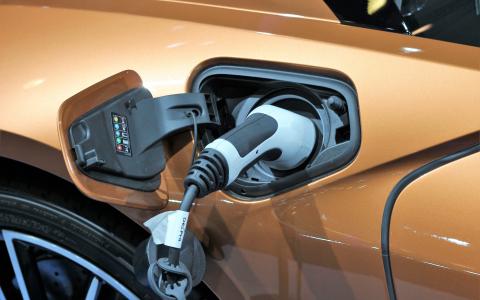
(MoneyWise) - After a white-hot early November, electric vehicle stocks have declined sharply over the past month or so. But for investors who got in early enough and stuck around, the returns are still solid.
Rivian Automotive, which debuted on the Nasdaq last month at US$78 per share, continues to trade near US$100. And Lucid Group, which went public through a SPAC deal this summer, remains up 55 per cent over the past two months.
Then there’s Tesla, which despite its recent pullback, is up a whopping 2,210 per cent over the last five years.
Warren Buffett isn’t known for chasing hype, but that doesn’t mean he’s missing out on the EV boom.
In fact, Buffett bought into the industry more than a decade ago. He poured hundreds of millions into Chinese electric-vehicle maker BYD, and that bet continues to pay off handsomely.
Here’s a look at the legendary investor’s favourite EV stock — along with two other Chinese manufacturers that may be worth pouncing on with any extra cash you’ve got .
BYD (BYDDY)
In 2008, Buffett’s company Berkshire Hathaway bought 225 million shares of BYD for US$232 million.
Berkshire’s latest shareholder letter shows it still held those shares as of Dec. 31, 2020 — except their market value had surged to roughly US$5.9 billion.
Considering that BYD has gone up another 25 per cent this year, Buffett’s company would have racked up another US$1.48 billion gain on that position, assuming he hasn’t sold any shares.
And there’s more to the company than just hype. In Q3, BYD sold 183,000 new electric vehicles (including hybrids), up 294 per cent year over year. And when it comes to pure EVs, the company sold 91,616, representing a 186 per cent increase.
Despite its entrenched position, BYD shares are not listed in North America. They only trade over the counter here, so you would need to use a specialized broker. But other fast-growing Chinese EV makers have made it to U.S. stock exchanges.
NIO (NIO)
NIO is one of them.
The company entered the market in December 2017 with a seven-seat premium electric SUV called the ES8. One year later, it debuted the ES6, and in late 2019, NIO added a five-seat “crossover coupe” SUV called the EC6 to its lineup.
The company delivered 24,439 EVs in the third quarter of this year, doubling the number of EVs delivered during the same period last year. As of Nov. 30, cumulative deliveries of NIO’s three models have surpassed 156,000 vehicles.
NIO shares have been on a roller coaster ride. Last summer, the stock was trading at less than US$10. It skyrocketed to over US$60 during the meme stock frenzy earlier this year, before losing a good chunk of the gains. Today, shares are trading at around US$30 apiece.
If you’re wary about putting your money into such volatile tickers, you can always dump your “spare change” into a portfolio tailored to your comfort for risk.
XPeng (XPEV)
XPeng is another Chinese EV company trading in the U.S. stock market.
It went public in August 2020 with an IPO price of US$15. Thanks to the market’s huge appetite for EV stocks over the past year, XPeng shares have climbed to over US$40 apiece.
Again, it’s not just hype — business is booming. The automaker is rapidly ramping up production.
In Q3, XPeng delivered 25,666 EVs, representing a 199.2 per cent increase year over year and marking a new quarterly record.
Meanwhile, total revenue jumped 187.4 per cent year over year to US$887.7 million for the quarter.
New tech or classic art?
Investors love EV stocks because many of them deliver oversized returns, but you should always remember they’re still subject to the ups and downs of the stock market.
If you want to invest in something more stable that still has high return potential, consider an overlooked asset: fine art .
Contemporary artwork has outperformed the S&P 500 by a commanding 174 per cent over the past 25 years, according to the Citi Global Art Market chart. Meanwhile, the correlation factor between contemporary art and the S&P 500 was -0.1 over the past 25 years.
Investing in art by the likes of Banksy and Andy Warhol used to be an option only for the ultrarich, like Buffett. But with a new investing platform, you can invest in iconic artworks too, just like Jeff Bezos and Bill Gates do.
By Jing Pan
Dec 21, 2021



